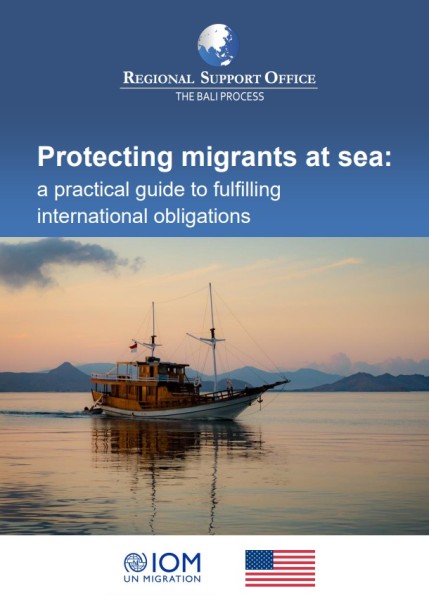Protecting migrants at sea: a practical guide to fulfilling international obligations

Type
Guideline
Country
Afghanistan,
Hong Kong SAR China,
Australia,
Bangladesh,
Bhutan,
Brunei Darussalam,
Cambodia,
China,
Fiji,
India,
Indonesia,
Iran (Islamic Republic of),
Iraq,
Japan,
Jordan,
Lao People's Democratic Republic (the),
Malaysia,
Maldives,
Myanmar,
Nauru,
Nepal,
New Zealand,
Pakistan,
Papua New Guinea,
Philippines (the),
Republic of Korea (the),
Samoa,
Singapore,
Solomon Islands,
Sri Lanka,
Syrian Arab Republic (the),
Thailand,
Timor-Leste,
Tonga,
United Arab Emirates (the),
United States of America (the),
Vanuatu
Region
Asia and the Pacific
Organization
Bali Process on People Smuggling, Trafficking in Persons and Related Transnational Crime (The Bali Process) - Regional Support Office,
International Organization for Migration (IOM)
Year
2020
Language
English
This publication is intended as a tool to complement and support practical application of the International Organization for Migration (IOM)publication, Protection of Migrants at Sea (IOM, 2018). It is comprised of two interrelated parts.
- Part I: Guidance Note: Part I offers guidance to government agencies in the operationalization of their international legal obligations to protect migrants at sea. It identifies and acknowledges the practical challenges of responding in contexts of international maritime migration, where human rights law and the law of sea intersect, including responding to cases involving asylum seekers, unaccompanied migrant children , victims of trafficking in persons and others who are accorded special protection in international law.
- Part II: Practical Scenarios: Part II offers Practical Scenarios for discussion and consideration, for users to adapt as appropriate in exploring the application of the laws and principles discussed in the Guidance Note. Scenarios are offered in the context of Search and Rescue, Interception/Interdictions well as Disembarkation a place of safety and cooperation. Brief responses to the questions presented for each scenario are offered in Section 2 of Part II.
Link to download file
